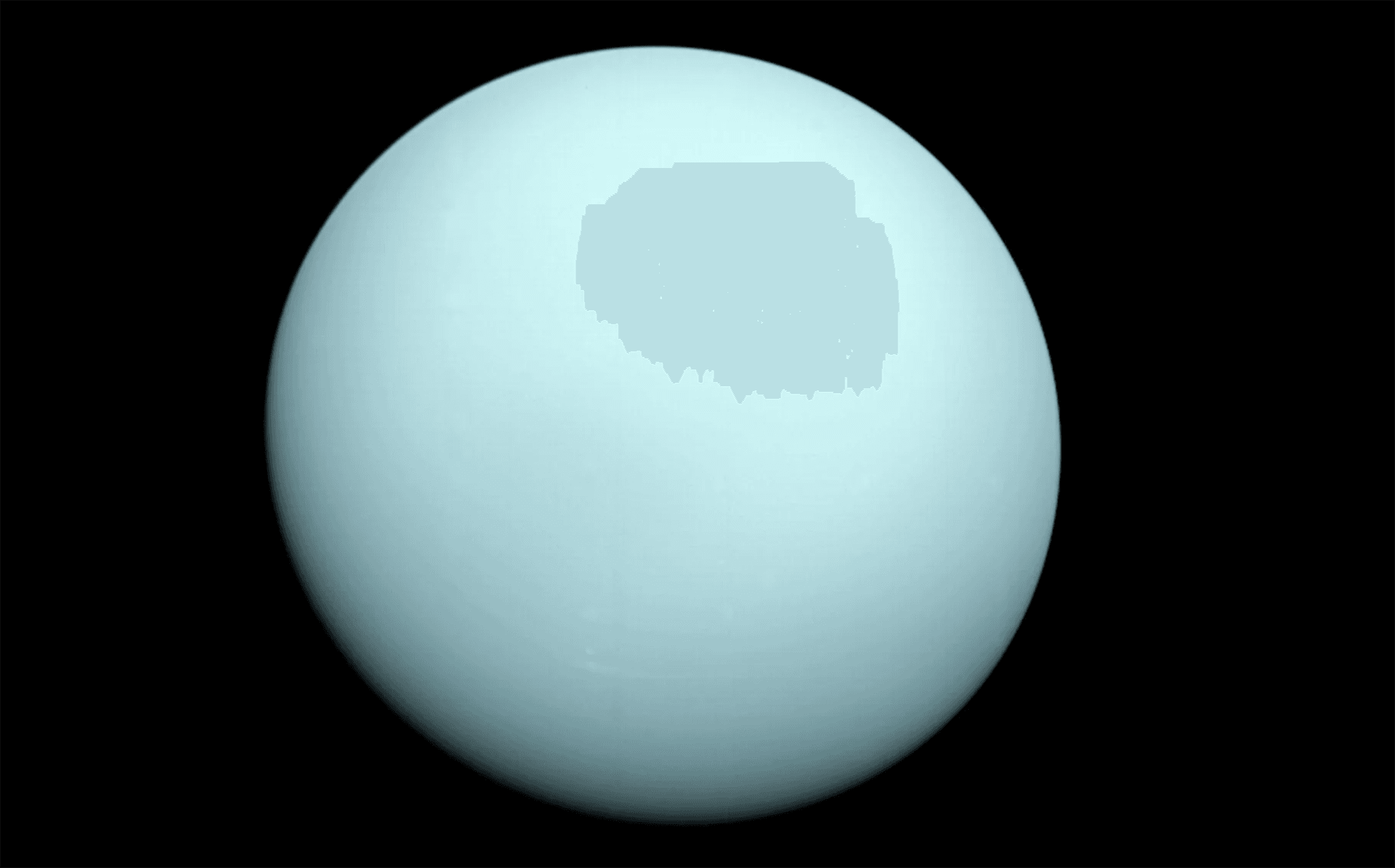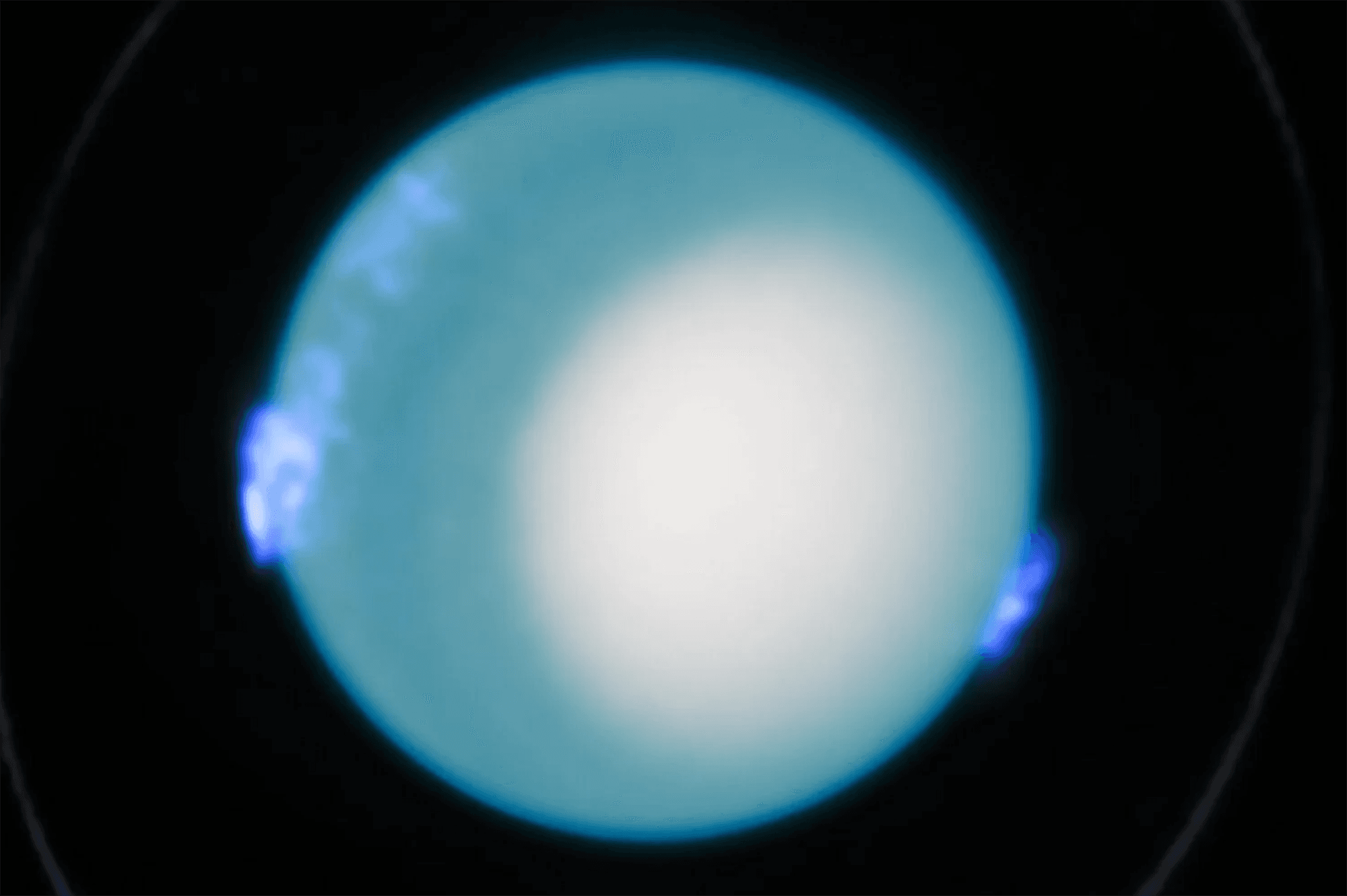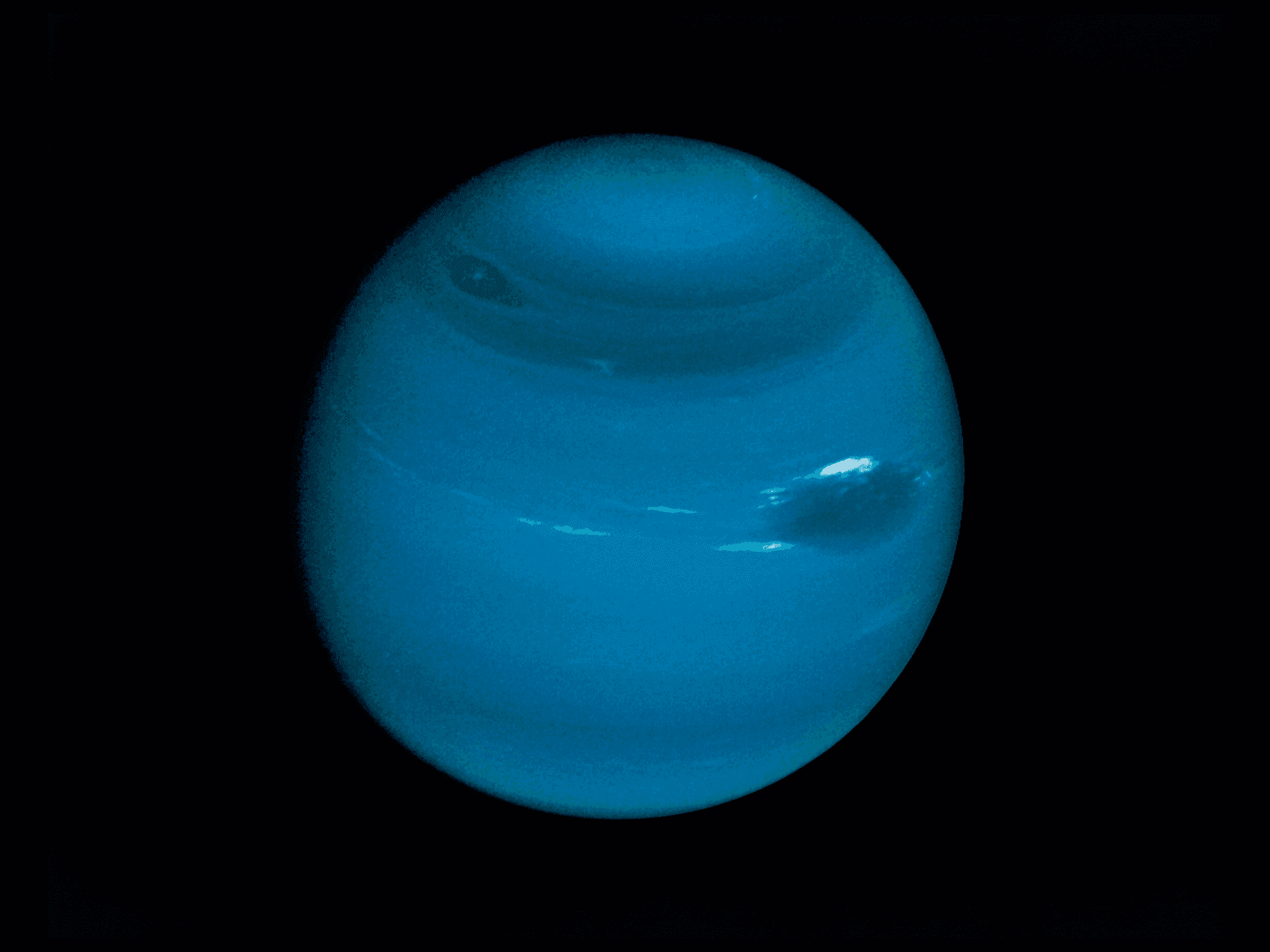Since Voyager 2 visited Uranus in 1986, scientists have debated the odd ice giant’s heat balance. The other giant planets of our solar system — Jupiter, Saturn, and Neptune — all emit much more heat than they absorb from the sun, indicating that they have strong internal heat sources. Voyager 2’s measurements from Uranus indicated only weak heat emissions.
But a new study indicates that Uranus does, in fact, have an internal heat source contributing to its heat flux. The study combined observations with a global model of Uranus across the planet’s full 84-year orbit and concluded that Uranus emits 12.5% more internal heat than it absorbs from the sun. That suggests that Uranus may not be so different from its fellow giants, but the planet’s large seasonal variations and differences across hemispheres raise plenty of questions about the planet’s interior structure. (Image credit: NASA; research credit: X. Wang et al.; via Gizmodo)




